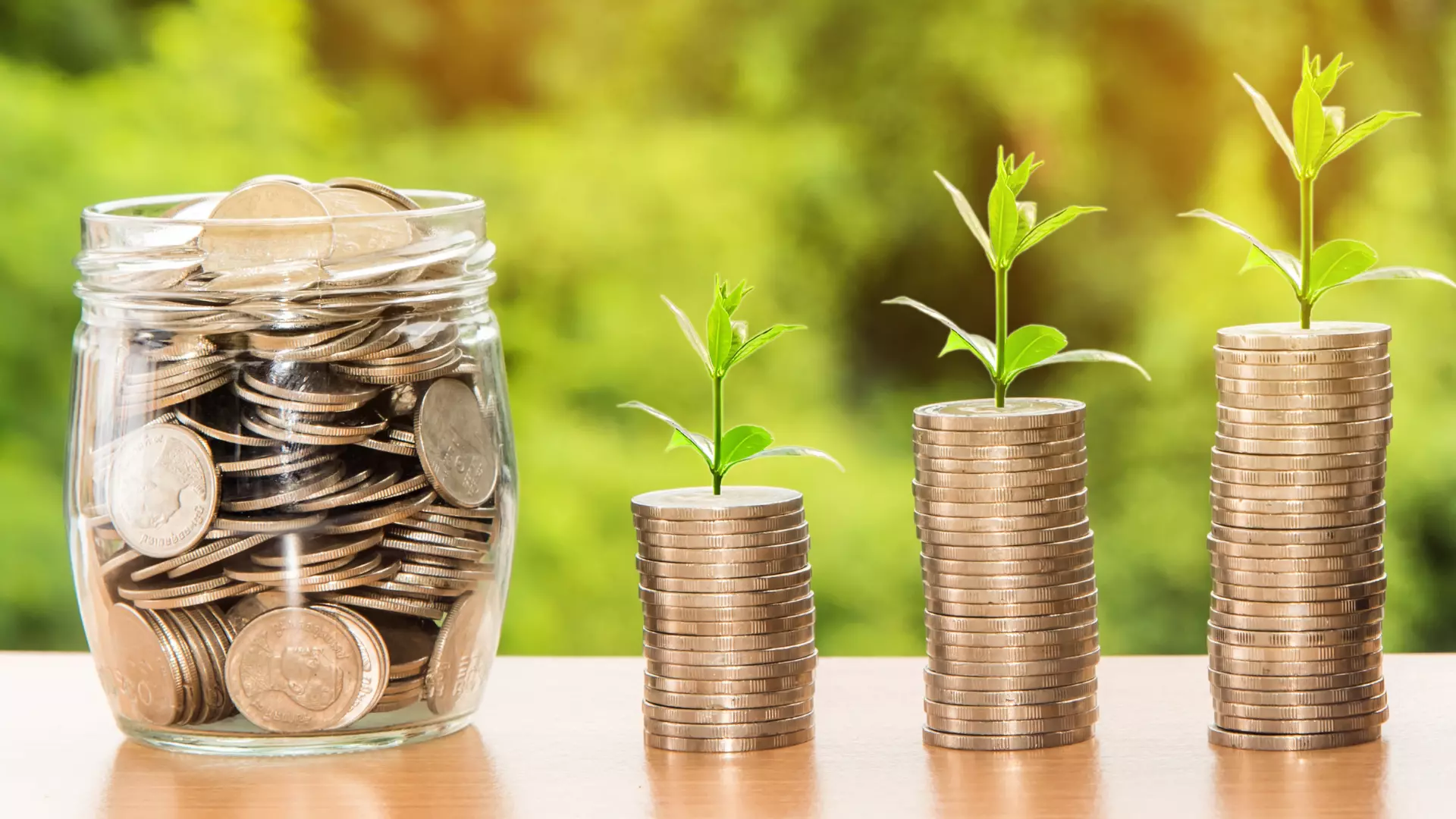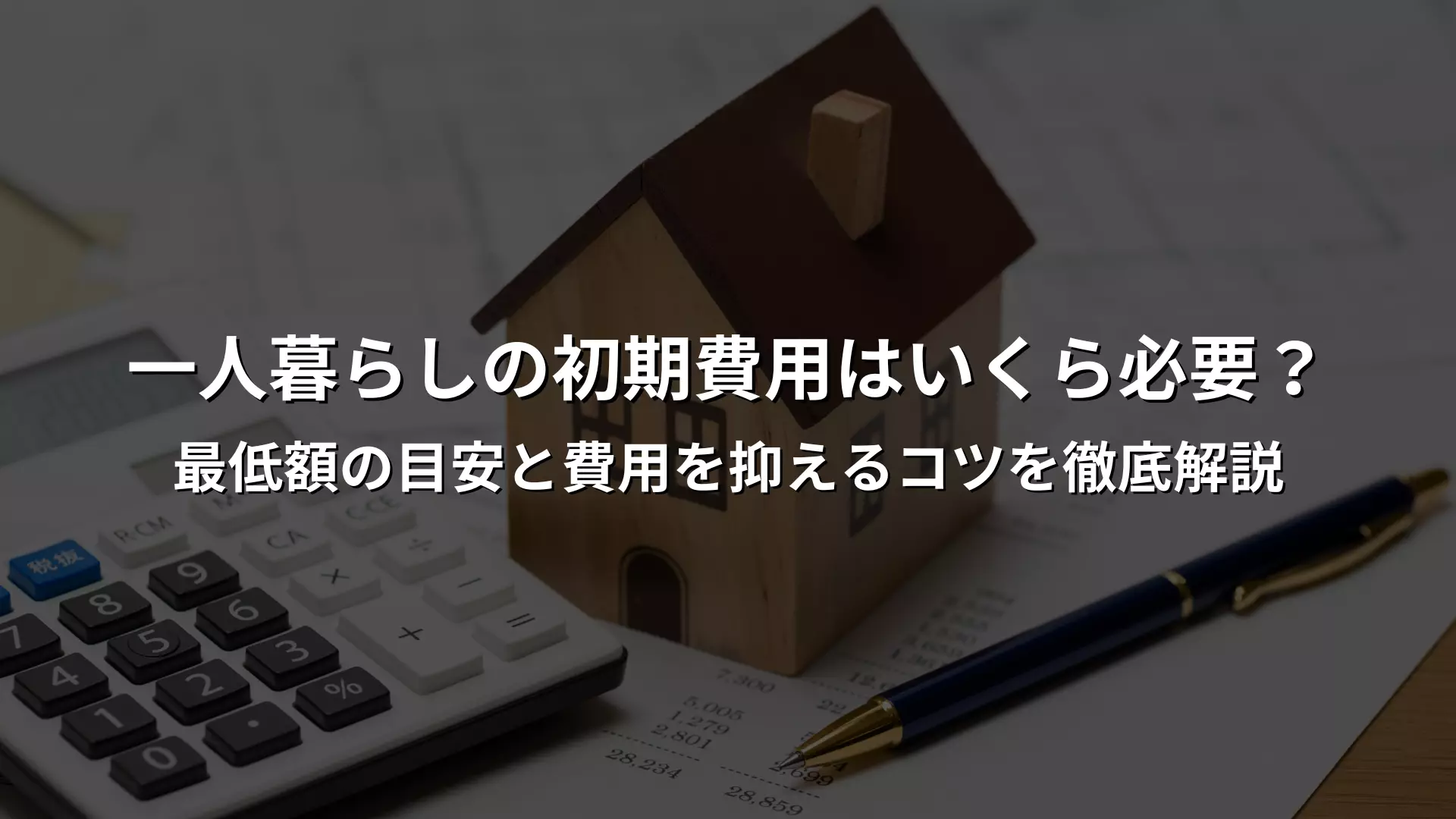Average savings for single people and data by household
The amount of savings for people living alone varies greatly depending on age, income, and lifestyle. According to the Central Council for Financial Information and various surveys, the average savings for single-person households is in the hundreds of millions of yen range, but the median is lower, meaning there is a discrepancy between actual lifestyles and statistics. There are also a certain number of people who say they have "zero savings," and behind this lie hidden challenges in the household finances, such as high fixed costs and poor income and expenditure management.
Here we will provide detailed explanations of the average and median amounts by age and annual income, the percentage of people who are unable to save, and the status of financial asset ownership, and compile data that will be useful for your savings plan.
Average and median savings for single-person households by age group
The average savings of single-person households tends to increase with age.
According to a 2022 survey by the Central Council for Financial Information, the average for people in their 20s is 1.76 million yen (median 200,000 yen), for people in their 30s it is 4.94 million yen (median 750,000 yen), for people in their 40s it is 6.57 million yen (median 530,000 yen), and for people in their 50s it is 10.48 million yen (median 530,000 yen). The average is inflated by some high-value savers, so the median is significantly lower. Especially among younger generations, incomes are low and living expenses and rent account for a high proportion, so some people are able to save less than 10% of their take-home pay.
By understanding data by age group, you can compare your savings situation with people of the same age group and set reasonable goals.
Average savings by annual income and take-home pay
According to the Financial Information Central Council's 2023 Survey on Single-Person Households, the average financial assets (savings) of single-person households by annual income tend to be as follows.
- Annual income of less than 3 million yen: average 6.63 million yen (median 500,000 yen)
- Annual income between 3 million and 5 million yen: average 10.19 million yen (median 2 million yen)
- Annual income between 5 million and 7.5 million yen: average 19.43 million yen (median 6 million yen)
- Annual income between 7.5 million and 10 million yen: average 38.37 million yen (median 22.6 million yen)
However, since the average value is heavily influenced by a small number of high-value asset holders, it is also important to understand the median. As the median figure shows, the actual savings figures for most people are often much more modest. As a guideline, it is recommended to save 10-20% of your take-home pay each month; for example, if your take-home pay is 200,000 yen per month, you should save 20,000-40,000 yen, and if your take-home pay is 250,000 yen, you should save 25,000-50,000 yen. This range is considered to be an easy savings amount for most households to continue without difficulty.
When deciding on future savings goals, the key is to balance them with your annual income and monthly living expenses, review your fixed expenses, and set a reasonable amount.
The percentage of people with zero savings and the reasons behind it
Statistics show that approximately 30% to 40% of single-person households report having "zero financial assets." This percentage is particularly high among people in their 20s and those with annual incomes of less than 3 million yen. The likely reasons for this are that fixed costs such as rent and living expenses take up a large portion of their income, leaving little room for savings. Other contributing factors may include a "save what's left over" approach, or a sudden reset due to unexpected expenses. Furthermore, excessive use of credit cards and cashless payments, and increased spending on hobbies and social activities are also factors that make it difficult to save as much as one would like.
You can get out of this zero-savings situation by using a household accounting app or by starting to save money in advance.
Financial asset holdings and breakdown
Savings and deposits account for over 60% of the financial assets of single-person households, followed by insurance, stocks, investment trusts, and installment investments such as iDeCo and NISA. Younger generations tend to lean towards highly liquid ordinary savings accounts, but those in their 30s and older tend to hold an increasing proportion of fixed-term deposits, investment trusts, and corporate and individual defined contribution pension plans.
Those who are conscious of asset formation are preparing for retirement and other life events by incorporating investments based on long-term, regular installments, and diversification. Increasing the variety of financial assets they hold increases their resistance to inflation and interest rate fluctuations, leading to peace of mind for the future.
How much should you save each month if you live alone?
In order to continue saving money comfortably while living alone, it's important to clarify what percentage of your income you should save. Many financial experts and surveys suggest that saving 10-20% of your take-home pay is ideal, but the amount you can achieve will vary depending on the proportion of fixed costs such as living expenses, rent, and utility bills. Furthermore, the amount needed will vary depending on life events such as marriage, moving, and retirement, so knowing your target amount in advance will lead to a successful savings plan.
Here we will explain the approximate income ratio, how to work backwards from expenses, and the amount needed for different purposes.
What percentage of your take-home pay should you save?
The generally recommended savings rate is 10% to 20% of your take-home pay. If your take-home pay is 200,000 yen, you should save 20,000 to 40,000 yen per month, and if it's 250,000 yen, you should save 25,000 to 50,000 yen. If you're a beginner or starting with no savings, 5% to 10% is fine to start with.
The important thing is to "make it a habit, not the amount," and to create a system where you take your salary and transfer it to a separate account when it comes in. When your income increases, the key is to not raise your standard of living too much, but to gradually increase your savings rate. If you cut fixed expenses and add income from a side job, saving more than 20% becomes a realistic goal.
How to set a savings amount by working backwards from living expenses, rent, and utility bills
Rather than "save whatever's left over," it's more effective to set your savings amount by working backwards from your living expenses. First, keep your rent within 25-30% of your take-home pay (for example, if your take-home pay is 200,000 yen, it should be in the 50,000-60,000 yen range). Next, identify your fixed expenses, such as food, utilities, and communication costs, and review your variable expenses (social and entertainment expenses). After deducting these, allocate at least 10% of the remaining amount to savings.
By using a household accounting app or credit card statement management, you can visualize wasteful expenses and accurately determine how much you can save.
Savings required for each life event
Setting a savings amount for each life event will increase your sense of purpose and make it easier to maintain motivation. For example, a good guideline for moving is five to six months' rent (including security deposit, key money, and moving expenses). It's recommended to save 500,000 to 3 million yen for marriage, six months' worth of living expenses for studying abroad or job hunting, and around 20 million yen for retirement in addition to your public pension.
Setting a deadline and target amount for each event and saving in a planned manner over the short term (within one year), medium term (within five years), and long term (10 years or more) is the shortcut to living a secure life and building assets.
Search from 6,630 rooms of 990 properties
Reasons why you can't save money and points to review your household finances
There are several reasons why it is difficult to save money when living alone, including high daily living expenses and fixed costs, a lack of understanding of income and expenditures, and the accumulation of small expenses. In particular, the idea of "saving only if there's money left over" is one of the major reasons why savings drop to almost zero when unexpected expenses pile up.
Here, we will explain in detail the characteristics of households with high fixed costs and ways to improve them, the importance of managing income and expenditures, the impact of unconscious spending, and habits that prevent planned savings.
Characteristics of households with high fixed costs and how to improve them
If fixed expenses such as rent, communication fees, and insurance premiums are too high compared to your income, it can be difficult to save money each month. Ideally, rent should be within 25-30% of your take-home pay, but in urban areas, it's not uncommon for it to account for 35% or more. Unused subscriptions and expensive smartphone plans also increase the burden.
Ways to improve your savings include reconsidering your housing, using a low-cost SIM card, canceling unnecessary insurance, changing your utility plan, etc. Once you reduce fixed expenses, they will not continue to put a strain on your household budget, so this is the first step to steadily increasing your savings.
Common mistakes made by people who don't know their income and expenses
If you don't have a complete picture of your income and expenses, you won't know where your money is going, and you'll continue to spend wastefully. A common mistake is not distinguishing between fixed and variable expenses and lumping all your expenses together. Also, if you only look at credit card withdrawals, small daily payments can pile up and far exceed your budget. The solution is to visualize your monthly expenses by category using a household accounting app or card statements, and get into the habit of regularly reviewing them.
Once you have a clear breakdown of your expenses, you can see where you can cut back.
The cumulative effect of small expenses
Small expenses like daily visits to convenience stores, eating out, and coffee can unconsciously put a strain on your household budget. For example, buying a 500 yen cup of coffee every day can cost you about 15,000 yen a month, or more than 180,000 yen a year. Impulse shopping at the supermarket and eating out more frequently can also increase food costs. While these are some of the pleasures of life, exceeding your budget can lead to a decrease in your savings.
As a countermeasure, setting a weekly food budget and managing it with cash or prepaid cards can help you control your spending.
Why "saving money when it's left over" doesn't save you money
The "save whatever's left over" method may seem reasonable at first glance, but in reality it can lead to very little savings. This is because it weakens your awareness of controlling your spending, and everyday purchases and unexpected expenses can easily lead to zero surplus. Also, because the amount you save each month is not consistent, it makes it difficult to create a long-term asset formation plan.
The solution is to "pre-save," which involves transferring your savings to a separate account immediately after payday. By using automatic transfers or fixed-term savings accounts, you can save money without relying on willpower. This type of system is essential for building a stable savings habit.
How to save money efficiently when living alone
To systematically increase your savings while living alone, it's important to not only save money every day, but also to create a system. Pre-saving and using a dedicated savings account are particularly effective in preventing overspending while ensuring you save. Also, by visualizing your spending with a household accounting app or credit card statements, and combining this with reward points and cashless payments, you can increase your savings efficiency without sacrificing your quality of life.
Here we will introduce some specific ways to save money that you can easily put into practice even if you live alone.

Save money automatically before you spend it with advance savings
Pre-saving is a method of transferring a set amount of money to a savings account as soon as you receive your paycheck. Unlike "saving whatever's left over," this method ensures that your savings increase because you use the remainder to cover living expenses. If you use a bank's automatic transfer service or a fixed-term savings deposit, the money is transferred automatically on a set day each month, so it's hassle-free. It's effective to start with 10% of your take-home pay and increase it to 15% or 20% as you get used to it.
Saving in advance will increase your awareness of spending management and lay the foundation for reasonable asset formation.
How to use dedicated savings accounts and accumulation systems
By setting up a dedicated savings account, you can clearly separate your daily living expenses from your savings. Setting up automatic transfers from your salary account to your dedicated savings account will make it difficult to withdraw money, preventing overspending. Also, by utilizing savings plans such as employee savings, iDeCo, and NISA, you can build up assets for the future while receiving tax benefits. Bank fixed-term savings accounts and high-interest term deposits at online banks are also recommended options.
Separating your savings from your everyday account makes it easier to maintain a planned, long-term savings plan.
Visualize your spending with a household accounting app and credit cards
A household accounting app automatically records your daily expenses and tally them up by category, making it easy to get an overall picture of your spending. By linking it to your credit cards or electronic money, you can accurately manage your household finances without the hassle of inputting data. Furthermore, graph displays and monthly comparison functions are recommended, as they allow you to see at a glance where you can save money. Credit card statements are also useful for analyzing usage patterns and identifying wasteful spending.
Visualizing your spending is an effective first step in encouraging savings to become a habit.
Increase your savings efficiency by using point rewards and cashless payments
By using cashless payment or credit cards, you can earn points when shopping or paying utility bills. Even with a 1% return rate, you can earn 10,000 yen worth of points for an annual expenditure of 1 million yen. The points you earn can be used just like cash to purchase daily necessities, exchange for electronic money, or apply to investment services. You can also increase your return rate by combining it with specific stores and campaigns.
By avoiding wasteful spending and utilizing points, you can increase the amount of money you actually save.
The benefits of increasing your income sources through side jobs and investments (NISA/iDeCo)
Taking on a side job or investing can be a great way to increase your savings if you live alone. By using all of the income from your side job for savings and investments rather than for living expenses, you can accelerate the pace of asset formation. Additionally, by utilizing systems such as NISA (tax-free small investment system) and iDeCo (individual-type defined contribution pension), you can increase your assets over the long term while receiving tax benefits. With NISA, investment gains are tax-free, and with iDeCo, contributions are eligible for income deductions, so you can achieve both tax savings and asset management at the same time.
To create a comfortable household budget, try to have multiple sources of income to reduce anxiety about the future.
Search from 6,630 rooms of 990 properties
Frequently asked questions about saving money for single people
Many people have questions about saving money for living alone, such as the average amount, monthly guidelines, how to save if you have a low income, how to prioritize savings over investments, and the amount of money you need before moving. It can be particularly difficult to determine how much you need to save to feel safe when living alone for the first time or when your income is unstable.
Here, we answer five common questions and provide data and practical solutions.
What is the average savings amount for a single person?
The average savings amount for single-person households varies depending on the survey, but the statistics from the Central Council for Financial Services Information tend to show a higher average. This is because a small number of high-value savers are pushing up the figures, and the actual median is much lower than the average.
While savings tend to increase with age, there aren't necessarily large differences across all generations. The key is to understand the difference between the average and the median, and set realistic goals that fit your income and life stage.
How much should I save each month?
It is generally recommended to save 10-20% of your take-home pay. If your take-home pay is 200,000 yen, the guideline is 20,000-40,000 yen, and if it is 250,000 yen, 25,000-50,000 yen. If your income is low, it's fine to start with 5%.
What's important is not the amount, but the habit of continuing it, so it's effective to set up a system where you save money in advance and automatically transfer it to a dedicated savings account on payday. Also, if you receive a bonus, you can significantly increase your annual savings by saving more than half of it.
How can I save money even if I have a low income?
Even if you have a low income, you can still save money by thoroughly reviewing your fixed expenses and managing your spending. Try to keep your rent to 25-30% of your take-home pay, and organize your communication fees, insurance premiums, and subscription contracts. You can also increase your savings by reducing waste on food and utility bills.
By tracking your spending with a household accounting app and practicing "pre-savings," which involves setting aside money each month in advance, you can steadily save even small amounts. It's also effective to take advantage of reward points and cashless payments, and put the money you save directly into savings.
Should savings or investments come first?
Basically, it is recommended to prioritize saving three to six months' worth of living expenses as a safety fund, and then consider investing. Savings are a safety fund to prepare for unexpected expenses or a decrease in income, and by securing this first, you can invest with peace of mind.
When starting to invest, it is easier to reduce risk by taking advantage of tax-advantaged systems such as NISA and iDeCo and managing your investments in a long-term, diversified, and cumulative style. Since it is important to balance savings and investments, decide how to allocate your funds based on your goals and time frame.
How much money do you need to save before moving?
The amount of savings you need to move is roughly five to six months' rent. If you include the security deposit, key money, agent fees, moving costs, and purchasing new living supplies, you'll need about 300,000 to 400,000 yen for a 60,000 yen rent. It's also a good idea to have an extra few tens of thousands of yen saved up to cover unexpected expenses and living costs in your new home.
Especially if you are starting to live alone for the first time, it is important to save money in a planned manner, not only for the initial costs but also for the funds you will need until your life becomes stable.
Summary | Achieve a secure life on your own with efficient savings
Saving for those living alone requires more than just knowing average amounts and guidelines; it's also essential to create a plan tailored to your income and spending situation. By saving in advance, aiming for 10-20% of your take-home pay, reviewing fixed expenses, visualizing your spending, and combining this with point rewards, you can increase your savings without straining yourself. Furthermore, once you've secured a safety net, incorporating investments like NISA or iDeCo can help you build assets for the future. It's also effective to increase your sources of income by taking on a side job, for example.
Develop a planned savings habit and aim for a household budget that will provide you with peace of mind for life events and retirement.

























